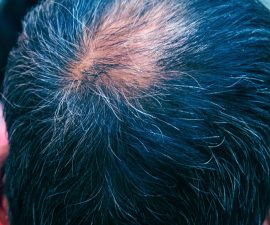… Continued …
Why do stem cells attract attention in research?
The use of stem cells is still debatable. But some experts believe that they are the answer of the cure for many conditions, including for stimulating new hair follicles in people with permanent hair loss and who cannot take conventional hair transplant surgery.
It’s thought that stem cells can be guided into specific cells with particular function so thus these cells could be used to treat and regenerate damage tissue in people with diseases that are very difficult to cure such as type-1 diabetes, stroke, cancers, heart diseases, Alzheimer’s disease, Parkinson’s disease, osteoarthritis, burns, or permanent hair loss.
Understanding stems cells may also be helpful to understand the way of how a disease occurs and develops. It may help test new medication for effectiveness and safety, too!
What actually is stem cell?
It is what we call for the body’s raw material. Experts believe that it can divide to form more cells called daughter cells (under the right conditions in a laboratory or in the body).
These daughter cells can become specialized cells (with a specific function such as brain cell, bone cell, or blood cell) – or – it can be self-renewal.
Where does stem cell come from?
In general, there are two main ways of how researchers get stem cells; embryonic stem cells and adult stem cells.
Embryonic stem cells are derived from 3-5 days old of embryos. Researchers can get them through fertilized eggs in the vitro fertilization clinics, and these eggs are never implanted in the uterus of a woman.
The benefit of embryonic stem cells is that the greater chance for these cells to divide into more stem cells of any cell type in the body.
And for adult stem cells, researchers can get them in small numbers of most adult tissues such as fat and bone marrow. But they have some drawbacks:
- They are likely to create similar types of cells. It’s so difficult or even maybe almost impossible to manipulate adult stem cell to form other types of cells – limiting the use of adult stem cells for medication.
- They are likely to behave abnormal due to containing abnormalities of environmental hazards or other factors.
For these reasons, researchers are looking for other sources or types of stem cells.
For instance, now there is also type of stem cell called adult-altered stem cells. These are derived from altering genes in adult cells in order to behave similarly to embryonic stem cells. But this method isn’t fully understood yet. The effect of altering adult cell (whether this will cause adverse effects in human’s body) is not known!
Scientists also have discovered stem cells from amniotic fluid (this fluid is found in the sac surrounding and protecting fetus in the uterus). The fluid sample can be derived from pregnant women through a procedure called amniocentesis. But it is too early to have conclusion, more studies in these amniotic fluid stem cells are required!
The use of stem cells to stimulate new hair follicles
Research into stem cells for treating permanent hair loss has become increasingly discussed in scientific seminars and newspaper over the past few years. Though it seems promising, but there is still no final answer.
Where does the idea come from?
Again, conventional hair transplant surgery relies on the existing follicles that remain. Some of these follicles are removed and transplanted from one part of the head to another area.
But for those with a complete bald or have thinning hair all over the scalp, it’s difficult to find the existing follicles that are still strong and healthy for hair transplantation.
The use stem cells may provide the answer. With this way, you will have unlimited source of cells for hair transplantation. In other words, the treatment is not dependent on the availability of your existing hair follicles.
Has this idea been officially approved for hair loss treatment?
Although there are some significant progressions of research in observing stem cells, but currently this is not approved yet for stimulating new hair follicles and treating hair loss.
Some studies have successfully created human dermal papilla cells transformed from adult-altered stem cells (human pluripotent stem cells).
But it’s not clear yet whether it works when transplanting to the bald area of the scalp. And as noted before, there is also no information whether or not it causes adverse effects in humans.
- https://www.nlm.nih.gov/medlineplus/ency/imagepages/9703.htm
- http://www.mayoclinic.org/tests-procedures/stem-cell-transplant/in-depth/stem-cells/art-20048117
- http://journals.plos.org/plosone/article?id=10.1371/journal.pone.0116892




